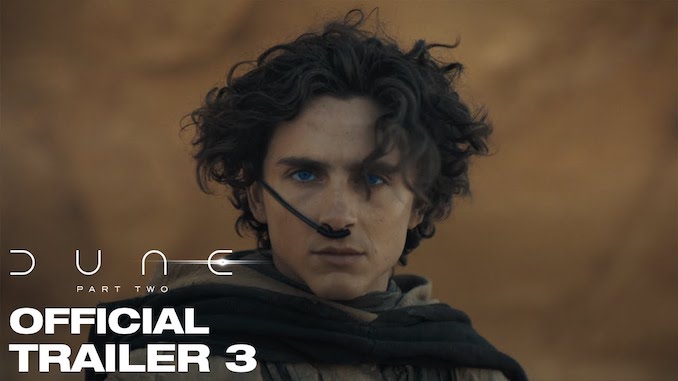Food for the Soul: Dune: Part Two

Canadian director Denis Villeneuve has always made interesting films. After his intriguing sci-fi tale Arrival, he was brave and talented enough to make Blade Runner 2049, which is a sequel to the iconic Ridley Scott’s dark vision of an AI-populated future. If you have not seen Dune: Part One directed by Villeneuve in 2021, it might be a good idea to check it out before seeing the second part that has just hit the theaters. Already with that first installment, Villeneuve managed to bring Frank Herbert’s vision to our modern times, outdistancing the flawed adaptation from 1984. Dune: Part Two has become an instant box office success, garnering over $370M in the first fortnight of its worldwide release.
For those not familiar with Dune the movie or the book, it is a sci-fi tale of one dynasty’s fall through regicide, a conquered planet’s struggle against the invaders, and a rise to power of a popular “messiah-type” guerilla leader; it also describes a revolution and the very current theme of ecological fight for survival on a water-deprived planet. Dune: Part One ended when Paul (Timothée Chalamet), the young Atreides duke, and Lady Jessica (Rebecca Ferguson), his mother and a sorceress supported by a secret society, escaped an invasion by the armies of a rival family. Paul and Jessica “go native,” hiding among the Fremen—the desert tribes who wage a never-ending guerilla war. Dune: Part Two reprises the story by showing Paul’s absorption into a tribe of natives and his budding romance with Chani (Zendaya), a female warrior, before the two of them embark on diverging paths—he into leadership of a nation and she into a bitter rejection as one of the few Fremen aware of the political manipulation that underlies the rise to power.
Picturesque rides on giant sandworms, sword duels, and battle scenes using Transformers-style clunky hardware create a rich visual background to the story of an interplanetary conflict. Herbert’s prescient book, but even more so Villenueve’s film, both focus this part of the story on the political processes in all totalitarian societies, where fear, poverty, and oppression push people to seek a dictator. The transformation of Paul, the outsider hailing from a more advanced society, into a prophet-leader is a lesson in modern anthropology—we observe how fundamentalism can be born and nurtured. Paul is fully aware that his position as a messiah is mythologized by a society that is less sophisticated than the one of his native kingdom, but he also knows that taking advantage of his divine status can help him win the independence war. Only Chani can see through the superstitions of her tribe and oppose the change in the leader she helped to build.
Dune: Part One is one of only a few recent movies that have managed to appeal to all generations of viewers, being based on the Boomer generation‘s favorite novel and at the same time full of the tropes, such as magic and sword fights, familiar to TikTokers from fantasy games and novels (most of which have been inspired by Herbert’s ideas anyway).
The film is rated PG-13 for the lack of blood on screen, but it is full of a psychological menace that is more powerful than gore. It’s a dark story. However, most teenagers will see this movie anyway, since its box office run is driven by social media, where it is trending heavily with memes and TikTok recreations of the iconic moments. This movie is also a harbinger of changing tastes in younger cinema audiences. Gen Z is tired of the overused formula of comic book hero stories, often brought to theaters in never-ending new editions. As Dune’s healthy box office results attest, audiences still will flock to big-spectacle fantasies, as long as there is a fresh perspective and intriguing, complex characters. Ironically, Herbert’s 1965 vision (albeit well translated into the present by a Canadian artist) fulfills this expectation.
